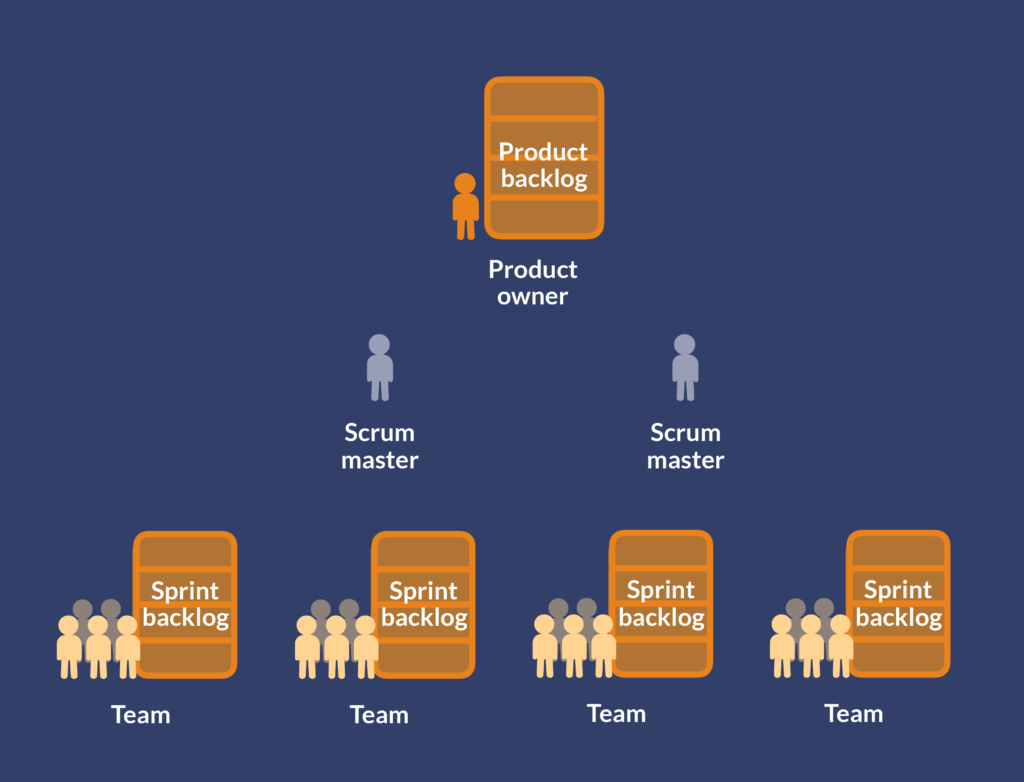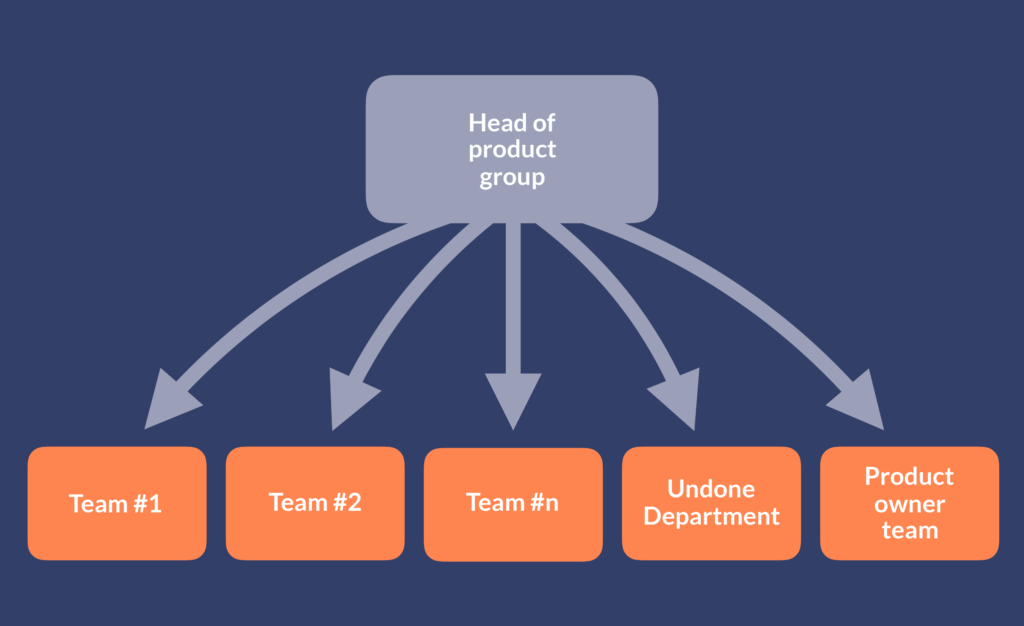The definition of agile transformation is to transform an organisation into a mode that is flexible, collaborative, self-organising, and fast-changing. Fortunately, there are a few established frameworks to solve this simple problem. The most radical and effective is LeSS (Large-Scale Scrum).
Less is Scrum
LeSS introduces ten principles that give a high-level guidance of LeSS values and standards. The ten principles are well explained in the LeSS introduction , most noteworthy being the ‘Large-Scale Scrum is Scrum’ principle. See the simplified version of LeSS framework below.

All the teams follow the Scrum guidelines and ceremonies. There is one product owner, one product backlog, one product-level sprint, and one Definition of Done.* One full-time Scrum Master can serve one to three teams. Up to eight teams** are customer-focussed feature teams,*** and they manage their own Sprint Backlogs during sprints.
LeSS prefers decentralised and informal coordination. LeSS introduces various coordination practices such as cross-team meetings, component mentors, travellers between teams, scouts, and open spaces. The communities that ensure consistent quality are run by the team members and focus on areas like user experience, architecture, and testing.
Culture follows the structure
LeSS transforms the organisation structure to be as lean as possible. The work is organised around teams without extra layers or specialised groups. See the LeSS organisation structure below.

The Undone Department contains operations that are not supported by the Definition of Done. Quality assurance (QA), architecture design, and business analysis are typical activities in the Undone Department. The goal in LeSS is to shrink the Undone department and move the work to teams. Extending the Definition of Done drives these organisational changes.
Job safety, but not role safety
The team’s high autonomy and accountability shrink the management role. Due to this, managers are optional in LeSS. If managers do exist, how would their position change?
Firstly, managers can be part of the team as a normal team member. Secondly, managers can coach teams and remove obstacles like scrum masters. Thirdly, managers can make strategic decisions and apply Toyota principles such as ‘Go and See’ and ‘See the Whole’ .
Before you take the LeSS pill
The product owner’s job is extremely challenging and time-consuming in one team Scrum. The LeSS organisation should be aware of the product owner’s workload. One solution is to delegate operations like specification and customer feedback to teams.
In LeSS teams are self-managing, cross-functional and multi-skilled. This leads to a very high standard of excellence. Strategies to support the team to live up to these requirements are coaching, training, and adding more members to the team.
LeSS is more about embracing principles and less about following detailed rituals or rules. Strict roles, program management, finance, and governance are missing. Due to this, the organisation must have a strong knowledge of agile and lean practices before adopting LeSS.
LeSS reveals an organisations real culture and values. It won’t fit all organisations and there is an obvious risk of failure. But when it does fit, it gives an enormous competitive advantage.
Graphic design: Ismo Juntunen
Details:
* Definition of Done is a list of activities that add value to the product. Every task needs to meet the Definition of Done criteria.
** This article is focussed on the LeSS-framework. Larger organisations (more than 8 teams) can adopt Less Huge, which based on the same principles and rules. Read more
*** The feature team is a cross-component team that completes end-to-end customer features. The opposite of the feature team is the component team, such as the front-end team or the operation team.
Read more:
https://less.works/
http://www.castsoftware.com/research-labs/agile-transformation-what-is-it-definition
https://www.youtube.com/watch?v=p_6OEMk3y28


